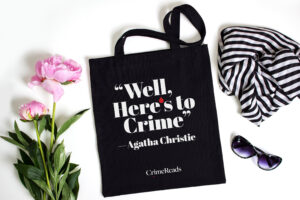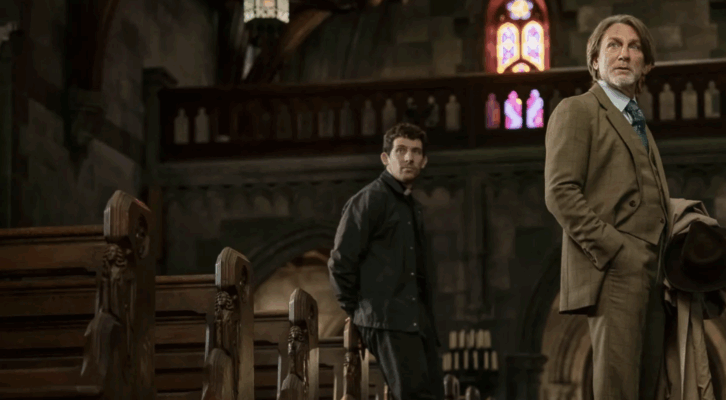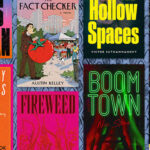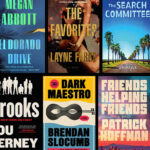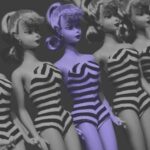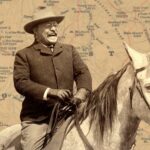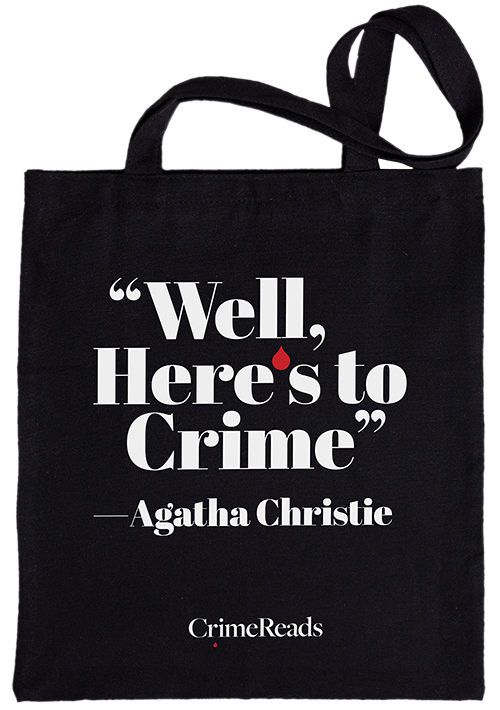“Crack killed everything.”
–Nas, 2012
It was a chilly spring night in 1984 and I was returning uptown from my cashier job at Miss Brooks, a fast food coffee shop located near 56th Street and 6th Avenue. Working from 3 PM to 11 PM, after closing time a few of the staff usually went out for drinks. By 2 AM, I would down one more pint of brew before walking over to 57th Street with the short order cook Xavier. We both lived on 151st Street off Broadway. Xavier was a recent transplant from the Bronx. I had dwelled in that neighborhood since boyhood.
While that nether world between Harlem and Washington Heights is now named Hamilton Heights, in those days we didn’t really call it anything but home. When I moved there in 1967 (when I was 4) with mom, grandma and baby brother, the working class community was a melting pot of races, religions and cultures that included down south Blacks, like my grandmother, holdover Jewish families who hadn’t migrated to Long Island, Puerto Ricans and a few Asian families.
Like an urban coming-of-age novel by Walter Dean Myers, I have fond childhood memories of the area, where I could see the Hudson River from the stoop. There are many remembrances that include the array of friends (and their parents) that lived in our building. Boys and girls together, we played stickball in the street, had Saturday afternoon trips to the Tapia movie theater where we watched Blaxploitation and kung-fu flicks, and afterwards crowded into each other’s apartments where we spun the latest soul/funk records, watched cartoons and sometimes had sleepovers.
On the second floor, my friend Stanley, was into comic books and could draw Marvel characters that looked exactly like the panels of our penciling hero Jack Kirby. His younger brother Beedee, who could do Warner Brothers cartoon voices as well as Mel Blanc, was another bestie. Across the hall from my first floor apartment, Jackie shared my passion for novels and music while Darryl’s dad, who was also Jackie’s dad, once treated us to a Betty Boop film festival that changed my cartoon loving life.
However, in the latter part, of the decade, our small world began to shatter when our buddy Marvin from the fourth-floor, the same dude who gave me my first sex-ed lesson when we found a stack of porn magazines in the trash, moved away. Later, Darryl and Jackie’s parents decided to relocate as well. Raised by both my mother and grandmother, in 1978 mom one day surprised us when she announced that me, her and baby brother Carlos were moving to Baltimore while grandma would be staying in New York. Homesick from the moment I got off the Amtrak in the city of spicy crabs and the ghost of Poe, for the next three years I attended Northwestern High School while plotting my inevitable return to New York City.
Moving back to Manhattan in 1981, I stayed with my grandmother, between college and various girlfriends, for the next ten years, and witnessed first-hand the transformation of our community. In the late ‘70s/early ‘80s, the latest immigrants, the Dominicans, began moving uptown in search of their piece of the American Dream. With the demographic shift, there were now different stores and restaurants lining the blocks, different music blaring from parked cars and apartment windows.
By 1984 the once small minority from “D.R.” had become the majority and, when the then-latest drug “crack” hit the streets that year, the uptown Dominicans found an illegal business that would make them rich, just as bootleg liquor had made Joseph Kennedy.
Stepping off the subway one night with Xavier, we exited the 147th train station around 2:30 am. Standing on the corner, a young Black man eyeballed us from a few feet away and began muttering, “Yo, crack man, I got that crack.” We just shook our heads and kept on stepping. Having never heard of “crack,” I assumed it was the slang for the latest marijuana on the market, like Acapulco gold, Buddha or Sess.
“I think I want to try some of that crack,” I said later, gulping from a forty-ounce in Xavier’s small bedroom. He looked at me as though I was crazy.
“You don’t want to mess with that stuff,” he warned, sagely.
“What are you talking about? Isn’t it just another kind of weed?”
“It’s not weed. It’s some stuff they mix with cocaine, like freebase for poor folks.” The only thing I knew about “freebasing” was that comic Richard Pryor damn near burned himself to death using it. Growing-up, I had read about coke, but as far as I knew the expensive white powder was something that celebrities and other ritzy folks did in recording studios, on movie sets and in the back rooms of Studio 54 or Xenon; indeed, I believed, it had nothing to do with the people in my community.
***
It can be scary when your world begins to change, but that is exactly what happened when crack usage began spreading through our community. It was as though someone dropped a lit match on a pile of old newspapers. The hellish inferno quickly spread and burned steadily for more than a decade. Never before had cocaine (and guns) been so cheap and plentiful.
Of course, I knew people who smoked weed or angel dust, and had seen a few heroin nodders leaning on Amsterdam Avenue, but crack was a another story, a sadder story, a wilder story as brazen dealers stood on building stoops pretending to be Scarface while selling their product openly, as though the stuff was legal.
Packaged in plastic vials with prices that ranged from five to fifty dollars, one puff, so they said, was enough to make you a junkie for life, a fiend forever trying to capture the euphoria of that first hit. The drug was smoked in a various ways with the most popular being circular glass “crack pipes.” As a former English major who read George Orwell, the year 1984 had always had cultural significance, but no one could’ve have predicted the wrath of that crack would have on NYC a mere twelve months after being introduced.
A year after seeing that first coke dealing corner boy, many close friends became addicted to the “rock.” I saw my homegirl Paula from the fourth floor, a smart Black girl who had gone to Catholic school and City College, begin to lose weight rapidly and looking extremely wild; while, two stories down, Stanley no longer drew comic book characters, but was often seen zooted. However, while the stereotype of crack junkies were Black people, white kids from Jersey were coming over the George Washington Bridge nightly.
In addition to the drugs, a glut of high-powered automatic weapons (nine-millimeters, Uzis) hit the streets and shoot-outs between dealers became the new symphony of the night. In many cases, those dudes didn’t know jack about aiming or control, so countless innocent bystanders were blasted by stray bullets.
Through it all, the cops virtually disappeared from the scene. Although the 30th precinct, located on 151st between Amsterdam and Convent Avenues (around the corner was the Battlegrounds basketball court) was only two blocks away, the cops were usually seen in clusters after something bad already happened. Still carrying six-shooters, many of them were scared while others were being “paid in full,” taking money or drugs from dealers, and then selling their own stashes as though Serpico never existed. It took years before the “Dirty 30” was put in check. Ed Bradley did a great segment of 60 Minutes (“NYPD: The Blue Wall Of Silence”) in 1995 that told the complete story.
As the lawlessness became a regular part of the landscape, loco drug dealers began shooting out the streetlights, making it easier for them to operate undetected in the darkness. Once upon a time fine girls, like my pretty friend Barbara from across the street, were sauntering down the block offering “blow jobs for five dollars.”
Snarling pit bulls became the pet du jour and sometimes, for no reason, either the junkies or dealers set the corner trash bins on fire simply to watch the blaze. By the time the pop group Culture Club sang “Karma Chameleon” on Dick Clark’s New Years Rockin’ Eve, ringing in 1985, the communities of Harlem, Hamilton Heights and Washington Heights had darkened as though a massive black cloud hovered over us.
***
In the winter of 1985, as the neighborhood became grittier than a Rza beat, I had the first of what would become a recurring nightmare. In that dreadful dream, the apartment building where I’d been raised was on fire with the hallway engulfed in smoke and flames. Friends and strangers ran across the dirty marble floors screaming, but incapable of escaping.
A few months after that first dream, my friend Barbara became the first crack causality that I knew personally. A tall, dark-skinned girl who could’ve been a model when she was a teenager, Barbara graduated from George Washington High School a few years before. When exactly she started “beamin’ up,” I had no idea, but witnessing her fall into the crack abyss made me angry.
Sometimes I saw her outside, walking-up the hill to meet the man once again, and we spoke to one another. Sometimes there was a glimmer of shame in her brown eyes, but most of the time she just kept on moving. It wasn’t until one day I noticed that she was pregnant that I even bought up her problem.
“I hope you not smoking that stuff while you’re pregnant,” I said, hoping to sound more like a big brother than a judgmental square. “That stuff can hurt your baby.” She smiled. “I’m not, Michael. Don’t worry, I’m not. I’m not that bad.” Whether she was smoking during those nine months, I don’t know, but a few weeks after giving birth, Barbara went on a binge and died inside a nearby crack house. Word on the street was that her lungs collapsed.
Not everybody I knew from the old block became crack heads, a few became dealers instead. James Hooks (name changed), who lived on the first floor of dead Barbara’s building, was just one of them. A few years younger, we didn’t really start hanging-out until we were both in our twenties.
A Pisces born elder son, James lived with his big family that included grandparents, two sisters, one brother and an under-the-influence mother. Sitting on the stoop one evening sharing a forty-ounce of malt liquor, which the billboard advertisements with Billy Dee Williams throughout the community assured us “worked every time,” and would lead to riches and beautiful women, I asked James, “How do you do it, man?”
“Do what?”
“You know, some of these crack fiends look so pathetic and beat down, how do you keep selling that stuff to them?”
“You bugging? I don’t care nothing about them. If they want it, I’m going to sell it to them. Somebody gonna sell it to them, why let the other man get them dollars. I don’t care who I sell it to or what they look like. If you became a crack head tomorrow, I’d sell it to you. If my own mother wanted some rock, I’d sell it to her too.”
Thinking to myself, that’s the coldest thing I’d ever heard, I took another swig of lukewarm beer and remained silent.
***
Months later, having fallen in love with a young downtown actress who lived on 24th Street and 2nd Avenue, I began spending more time away from the hood and more hours seeing art films, dancing at trendy clubs, sipping martinis and trying to digest the unreadable Naked Lunch. Still, every few days I rode uptown to visit my grandmother, and when I did, I always made time for James.
Unlike the crazed dealers depicted in urban gangster films, James wasn’t on some hyper ultra-violent power trip. I don’t even think he carried a gun, but if he did, he wasn’t into waving it around or threatening people. Every now and then, I’d go with him to the drug spot on 146th Street, so he could “re-up.”
The spot was a desolate apartment on the third floor of a tenement building. Walking up the stairs, I could hear the sounds of crying babies and loud televisions. Greeted at the door by a hulking jerri-curled dude carrying an Uzi, the transactions were done in the middle of what used to be the living room.
There was a drug scale, an endless supply of cocaine and plastic bags. The coke was shoveled onto the scale using playing cards. Talking in fucked-up Spanish while “Tony Montana” spoke in broken English, James bought the blow (“fish scale, poppi”) and cooked the crack at another location.
One summer Sunday afternoon, he and I were standing on Broadway with when a fight broke out between a two dealers. James knew enough of the language to know this wasn’t a good look. Grabbing me by the sleeve of my shirt, James screamed, “We gotta get out of here.”
“Why?”
“This ain’t time for questions,” he replied as we ambled down the blocked. Seconds later, shots were fired. Turning around, I witnessed one of the Dominican dealers shoot his friend six times. As the bullet-ridden victim fell, I vomited and teared up. James looked at me and laughed.
“You’re not built for these streets,” he said and we walked on Riverside Drive headed back to our own block. Later, I witnessed more dudes getting shot and killed, but it wasn’t something I would ever get used to. Sometimes I believe that part of what got me into writing crime fiction was as a way of channeling some of the negativity I saw and absorbed during that period of my life. Though most of my stories take place in, as photographer Jamel Shabazz calls “a time before crack,” I am still weighted down by the heaviness of those days.
In 1986 journalist Barry Michael Cooper wrote the first article about the drug for Spin magazine. Most of his story took place in my neighborhood from Broadway and 145th Street and got worse the further east you travelled. Down those mean streets the dealers were mostly young African-Americans who had little idea how much pain and damage they were inflicting on the community.
“Crack is, for many, escape, booster, stabilizer, and status quo,” Cooper wrote. “Known on the street as “the white genie in the bottle” (it is sold in vials), a rub of the crack lantern grants the wish for temporary residence in the dreamstate of your own design.” A few years later Cooper used his research to write the screenplay for New Jack City (1991), a crack origin story and crime classic.
“Harlem is split into two periods: BC and AC, Before Crack and After Crack,” Cooper told Stop Smiling in 2007. “There was a profound change when that drug hit Harlem. I think crack became so widespread because it didn’t involve needles. People are scared of needles. With crack, you smoked it, and it was an immediate high.”
Certainly, no amount of First Lady Nancy Reagan’s “just say no” ads or Pee-Wee Herman anti-crack commercials was going to stop the epidemic. My grandmother, who had lived in Harlem since the 1950s, compared that era to “the wild wild west,” which was quite fitting. In 1987 Harlem hip-hop pioneers Kool Moe Dee and Teddy Riley made a record with that exact name.
***
In 1991, I was living back uptown with my grandmother and working at a homeless shelter on the Lower East Side called Catherine Street. One day at lunchtime I ran into my old neighbor Paula. She had cleaned-up her crack head ways and was working as a drug counselor at a local hospital. “Well, they got the right one,” I joked.
Returning home one afternoon, grandma was more nervous than usual. Sitting on the side of her bed listening to 1010-WINS and literally twiddling her thumbs, she said, “Go in the living room and look at the ceiling.” Walking into the room, I looked upwards and saw a massive bullet hole.
Standing behind me, grandma said, “I was sitting in here watching The Price is Right, when something told me to go into the kitchen. When I did, I heard a loud noise and saw this.” Afterwards I went across the street to James’s crib, and he introduced me to the drug dealers who lived upstairs from my grandmother in apartment 2-E. Although I knew there were a few drug apartments in our building, I had never seen these guys. “Poppi, I’m so sorry, but some asshole was playing with the nine (millimeter) and it went off. Tomorrow, I’ll send somebody to fix the hole.”
“Fix the hole?” I laughed. “Fix the hole? Man, you could’ve killed my grandmother.”
“We sorry, poppi. Did your grandmother call the police? Did she tell them we were drug dealers?”
Getting nervous, I answered, “I’m sure she didn’t tell them you were drug dealers, because she didn’t know you were drug dealers. Hell, I didn’t even know until just now.”
“OK, poppi. We’ll fix the hole tomorrow.”
Two months later, with the massive hole still in the ceiling, grandma packed-up twenty-four years worth of memories and moved to Baltimore with my mom.
***
Still living in New York City, but dwelling in Chelsea in the 1990s and moving to Brooklyn in ’99. I always returned to 151st Street to refresh the memory machine for future fictions, including the 2024 crack era story “Oasis,” published in Rock and a Hard Place #12. Though that maddening time made me a bit crazy and a lot paranoid, I still dig crack era related pop culture including songs (Oran Juice Jones’ “Pipe Dreams,” The Notorious B.I.G.’s “Ten Crack Commandments”), books (“Crackhouse” by Terry Williams, “Iced” by Ray Shell), movies (Menace II Society, Paid In Full) and television shows (Snowfall, anything produced by 50 Cent).
Meanwhile the old neighborhood, like so many in New York City, has been gentrified long time ago with skinny white women jogging along the same blocks where I had seen brutal slayings and blood stains. Cute cafes and restaurants have opened where there were once smoke shops that sold drug paraphernalia and liquor stores.
Thinking about yesteryear friends, I remembered that Stanley and Marvin were dead, victims of the crack years, while others relocated to various parts of the state or on the other side of the Hudson.
Still, what was most surprising was glancing across the street and seeing James sitting on his stoop.
After greeting me with a brotherly hug, when shared a frosty forty and talked about those dark days as though recounting a horror movie. “See that chick over there,” James said, pointing to a beautiful Black woman walking down the hill. “She lives in your old apartment.” Sucking my teeth, I replied, “I’m sure they patched up that bullet hole in the living-room ceiling by now.” And we both laughed.


